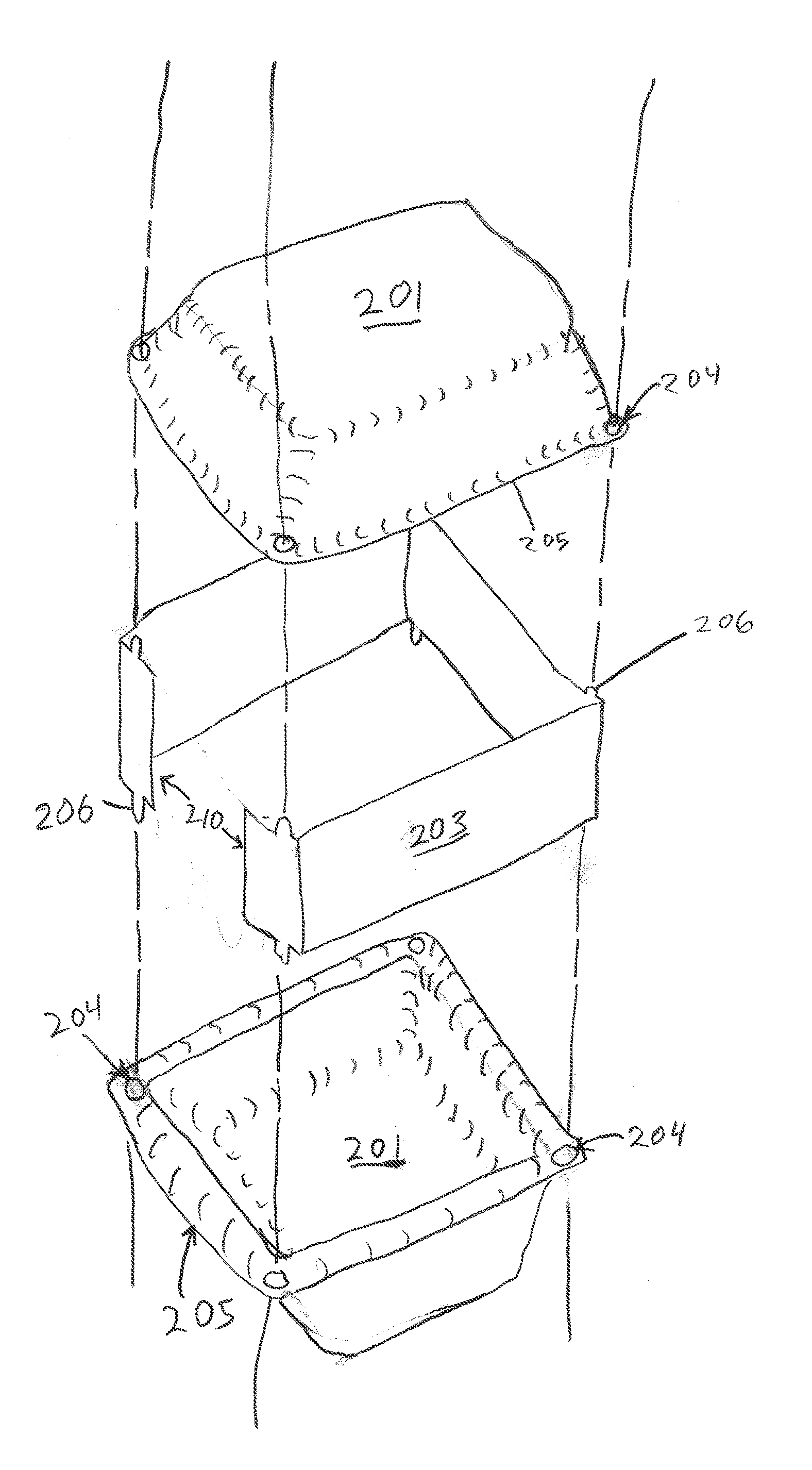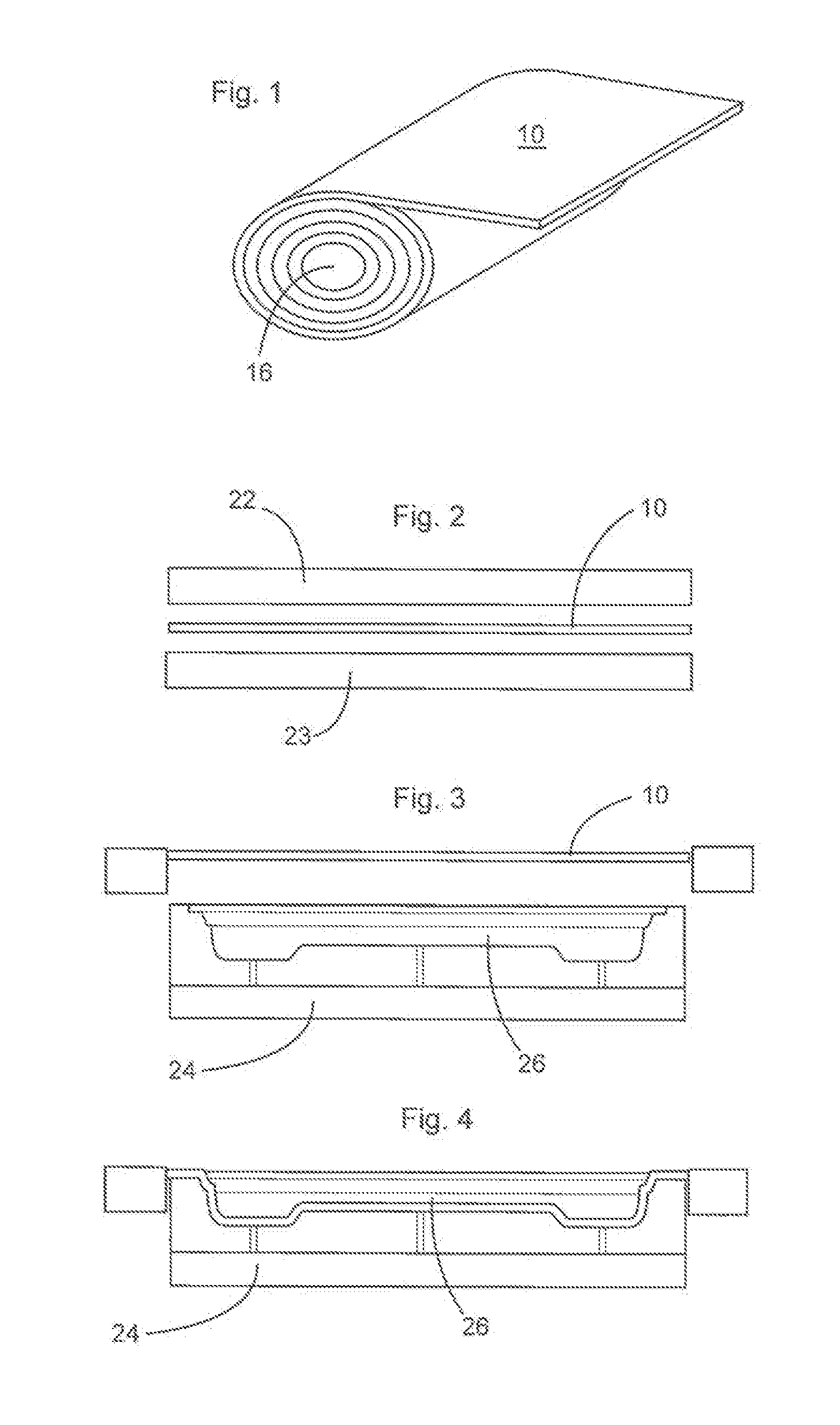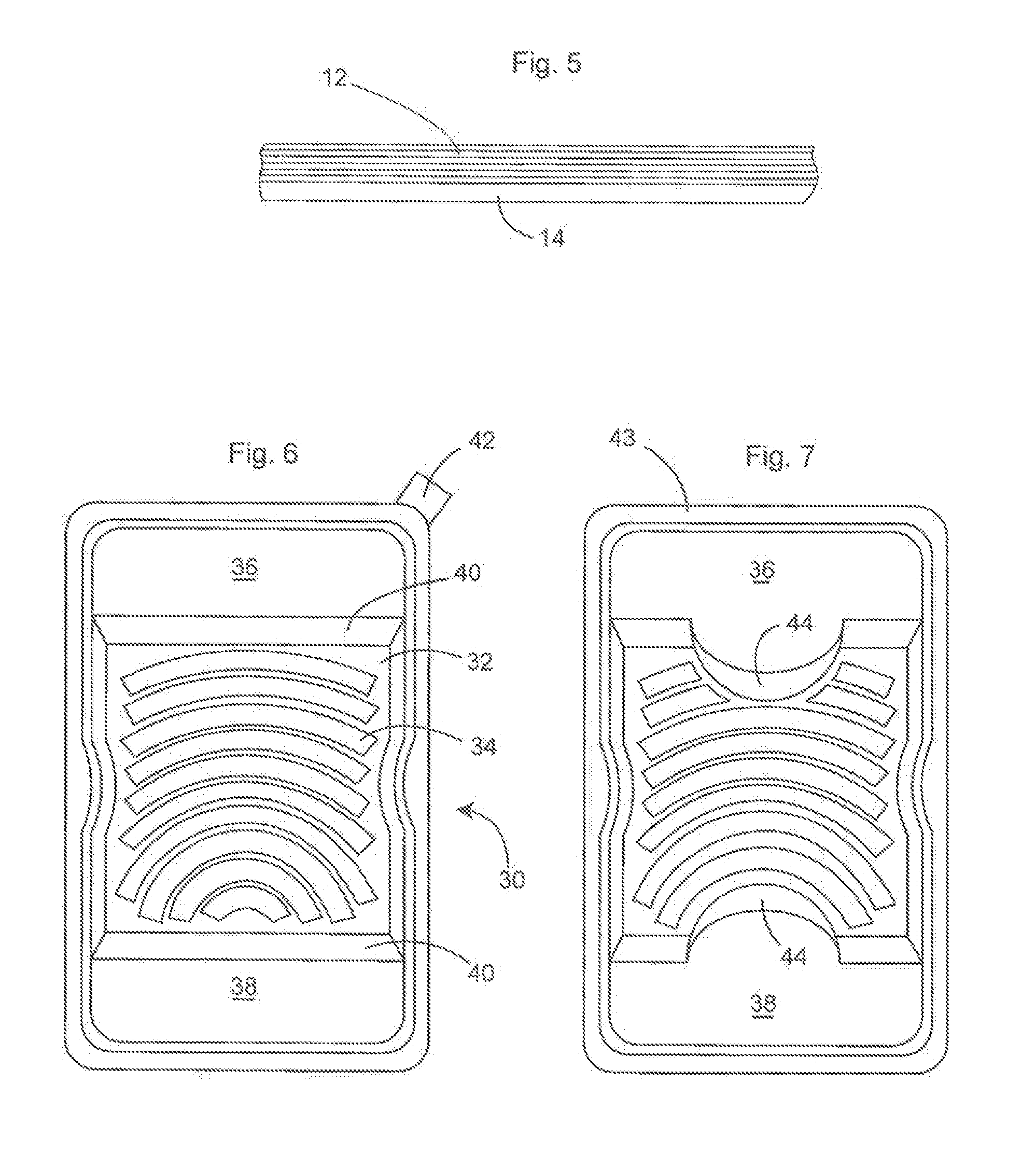Shaped Articles Having Peelable, Perforated Surfaces and Their Use for Segregating Particulate Materials, Such as in Animal Litter Trays
a technology of applied in the field of multi-polymerlayer thermoformable materials and articles formed, can solve the problems of inconvenient cleaning and operation of the apparatus, waste of otherwise usable litter, and decreased efficacy, and achieve the effect of facilitating the peeling of the liners
- Summary
- Abstract
- Description
- Claims
- Application Information
AI Technical Summary
Benefits of technology
Problems solved by technology
Method used
Image
Examples
example 1
[0148]Peelable Cat Litter Tray
[0149]A tray suitable for use by domestic cats, rabbits, ferrets, chinchillas, or other similarly-sized animals as a litter box was made. A substrate sheet of thermoformable plastic was formed into a tray having strength and rigidity sufficient for containing a clumpable cat litter within its concave interior portion and for maintaining its integrity upon ingress and egress of domestic cats. The tray had a lip a flange) surrounding the entire interior portion at the periphery of the tray. Prior to forming the tray, multiple peelable polymeric liner sheets were peelably adhered to the substrate sheet to form a stack having an overlapping portion, in the overlapping portion, each of the liner sheets overlapped the substrate sheet and all other liner sheets interposed between it and the substrate sheet. During thermoforming, the tray was formed in the overlapping portion. After forming, the stack was trimmed along the periphery of the lip, so that substant...
example 2
[0156]Another litter box suitable for use by domestic cats was made using a pair of the tray described in Example 1, except that each tray had four holes extending completely through the lip of the tray, one at each corner of the rounded rectangular tray having sides that sloped inwardly at an angle of about 75 degrees. One tray was placed on the floor, as with a normal litter tray. A piece of cardboard was cut and bent into roughly the shape of the letter C when viewed from the edge of the cardboard. Eight tabs extended from the cardboard, four along each of the opposite ends, spaced to correspond to the position of the holes in the trays. If the cardboard was viewed from one edge, it would appear to have the conformation of the letter C, with four tabs extending from the viewing edge toward the viewer and the other four tabs extending away from the viewer from the opposite (obscured) edge. Four tabs along one edge of the cardboard were placed into the four holes in the tray restin...
PUM
| Property | Measurement | Unit |
|---|---|---|
| thickness | aaaaa | aaaaa |
| thickness | aaaaa | aaaaa |
| thickness | aaaaa | aaaaa |
Abstract
Description
Claims
Application Information
 Login to View More
Login to View More - R&D
- Intellectual Property
- Life Sciences
- Materials
- Tech Scout
- Unparalleled Data Quality
- Higher Quality Content
- 60% Fewer Hallucinations
Browse by: Latest US Patents, China's latest patents, Technical Efficacy Thesaurus, Application Domain, Technology Topic, Popular Technical Reports.
© 2025 PatSnap. All rights reserved.Legal|Privacy policy|Modern Slavery Act Transparency Statement|Sitemap|About US| Contact US: help@patsnap.com



